As the days get colder and shorter, we are often asked about how to keep pigeons warm. The short answer is that in most climates no special care is needed. They keep themselves warm very successfully with just their fluffed feathers and body heat! In fact, using supplemental heat creates far more risk than benefit. Since we do have readers from truly cold places, however, here are some guidelines for the winter pigeon aviary, courtesy of long-time Palomacy volunteer Rose Lalla Jensen.
(Please note that these recommendations apply to healthy, acclimated, sturdy pigeons. Frail or ill pigeons, and doves such as ringnecks, should not be kept outdoors in any weather colder than 60°F.)
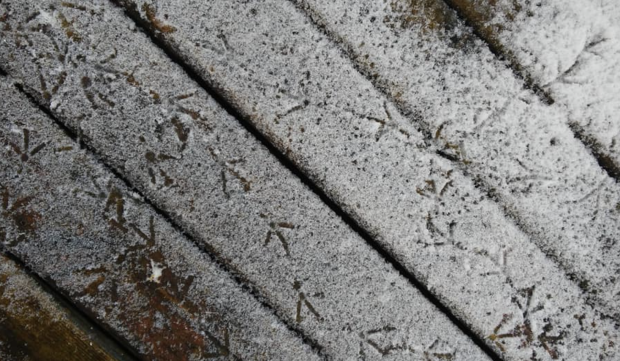
Footprints in the snow, in Carol Davie’s aviary
Good morning from frigid Minnesota! We’re currently at a balmy feels-like -24°F. This is typical for January, and we often get even colder. We have a small pigeon aviary, housing four couples and two bachelors. They are going about their regular day, having had breakfast, and waiting for clean bath water.
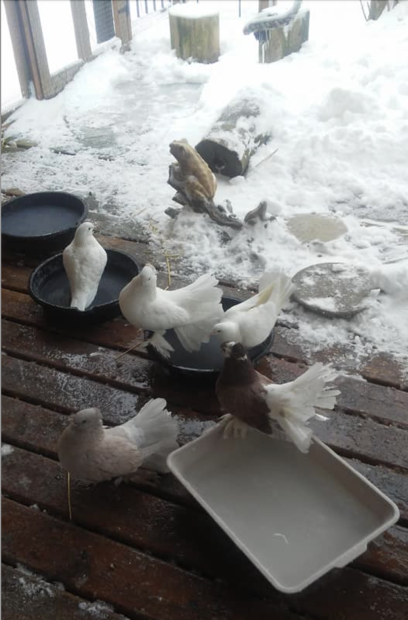
Carol Davie’s pigeons line up for bath-time in Canada
Healthy pigeons in good feather condition absolutely can thrive in cold climates! A few things are important though.
In addition to being healthy and in good feather condition, it is important that they have time to acclimate to the cold. Our rule of thumb: they need at least four or five days of overnight temps above 40°F. Here that generally means anyone who will be wintering in the aviary needs to be out by mid to end of September.
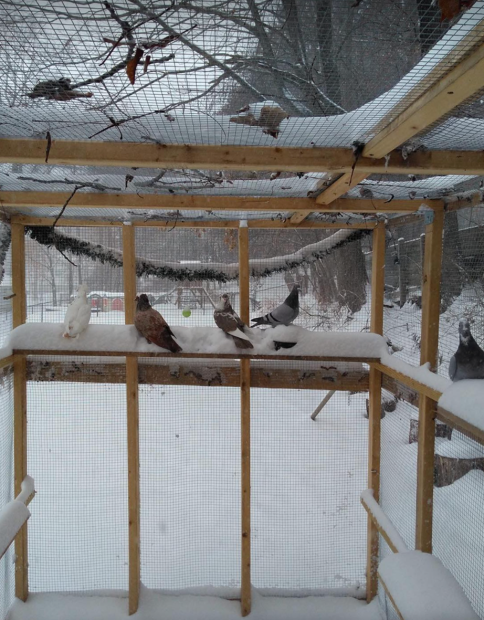
Winter in upstate New York is just fine for Gemm’s birds
All aviaries need a portion that is sheltered from the wind and wet. Here, we also need the roof in the shelter to be sturdy enough to support a snow load, and the enclosure needs to be able to be closed off when it gets extreme.
Ours is built with 2×4 walls, roof, and door, all insulated, and a triple glazed window like you would use in a home. We also have polycarbonate panels that can be added to the sides to add further protection from the wind. Some people use greenhouse panels, or even heavy duty clear poly mesh tarp, to block the wind but still let in light.
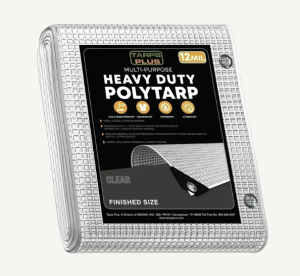
Keria Rossin uses mesh poly tarp to keep her flock warm in the Michigan winter. www.tarpsplus.com
Their nest boxes are lined with Reflectix (think bubble wrap between layers of emergency blanket material) which reflects their body heat back to them. We also provide lots and lots of pine needles for cozy nests.
The door to the condo is made with a little “pigeon portal” so they can still come and go during the day, but be kept inside on nights too cold for us to feel comfortable. We have one couple who prefers to sleep in the flight regardless of the temp!
We have water de-icers for the bath and drinking water, which do just that — prevent water from freezing. All electric cords are rated for heavy-duty outdoor use, all plug connections are GFCI for safety and are in sealed cases designed to keep water and dust out.
We do feed a mix a little higher in protein and fat from October to April so they have the extra energy needed. Split peas and lentils boost their protein, and safflower, sunflower hearts and chopped peanuts, which we usually only recommend for treats, give them the added fat to help them stay warm.
We do NOT provide heat, nor do we recommend it. There are just too many issues. The three top are fire, burns, and power failure. While some heaters are safer than others, there truly are no coop-safe heaters. Any heat source is a fire risk, and many are burn risks. And remember the part about acclimating birds for at least four to five days while lows are above 40°F? It is the sudden temp drops that are dangerous. So if you just heat the aviary, even just to 32°F, and your heater fails during the night, your birds are in trouble.
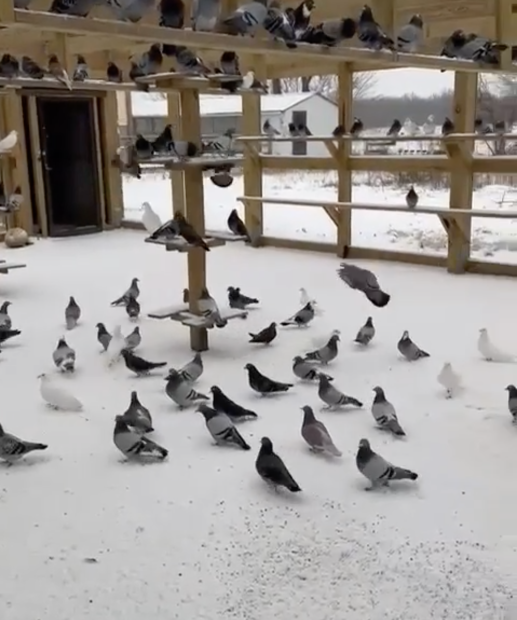
Christina’s flock thrives in Chicagoland
Remember, pigeons live and thrive in virtually every climate and every place (except Antarctica). Their feathers are excellent insulators and they have mastered the art of cuddling. Of course, you must always be vigilant for a bird who is not feeling well, or whose feather conditions are poor. When a pigeon is ill, their ability to thermoregulate is one of the first things they lose, so those birds need to stay indoors. There are also some breeds of fancy pigeon whose natural powers of insulation have been stolen from them by inbreeding (such as frillbacks). And a pigeon who has not had the chance to gradually acclimate to the cold should be kept indoors until the spring. Finally, doves such as ringnecks should never be kept outdoors when the temperature drops below 60°F.
In most cases, however, as long as the birds have access to a place that is dry and protected from the wind, and a belly full of good food, healthy pigeons will do just fine and may in fact show a total disregard for the cold.
Snow? What snow?
